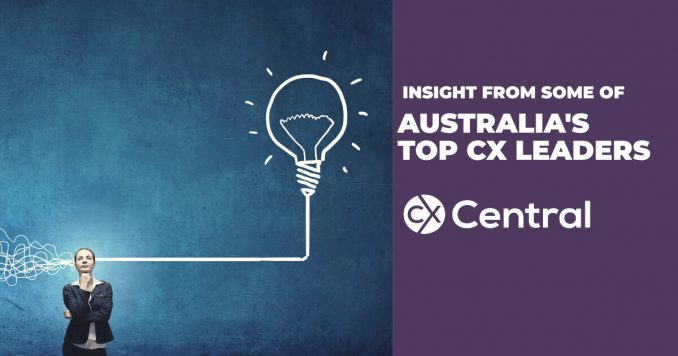
Insight from some of Australia’s top CX leaders
From the editor: Have you been wondering what some of Australia’s Top CX Thought Leaders think about a range of topics?
It probably wasn’t the first thing on your mind when you woke up this morning however there’s plenty of takeaway lines/gold nuggets in the article below that provides a summary of the recent inaugural CX Thought Leaders forum held in Sydney.
Whilst this event originally took place in 2016, the content and key takeaways are still relevant today so its still well worth your time to read.
A special thanks to Greg Tanna for sharing his thoughts from the forum with our audience.
Tanna Partners were delighted to recently host our inaugural CX Thought Leaders’ Forum dinner in Sydney on August 4th 2016.
Guests included a select group of CX leaders, including representatives from a range of industries and services including telco’s, insurance providers, BPOs, technology vendors, systems integrators, healthcare, strategists and consultants.
The intimate dinner event allowed Australia’s Top CX leaders to gather to discuss a range of key issues including where CX sits in the Australian market (in terms of innovation and progress) how much of the conversation around CX equates to actual investment and engagement from the C-level and what are the challenges and benchmarks for providing outstanding customer experience.
The key topics of the forum were developed to foster conversation around the enormity of the challenge ahead for the modern Enterprise: to do more with less whilst delivering world-class CX.
Key discussion points for some of Australia’s Top CX Leaders included:
1. CX in Australia – where do we sit and how well do we perform on a global stage?
The bigger question of the evening was in and around how Australia is faring globally – are we simply keeping pace or are we actually innovating? Consensus suggests that what leaders thought they were aiming for (in terms of strategies and focus) was continuously changing.
“Rather than a customer strategy, you need a customer framework. That framework should enable you to meet the needs of the customer in a dynamic way that changes month to month.”
“The pace of change is dramatic and we need to be constantly innovating – CX is a daily proposition. “
The general consensus appeared to be that Australian companies are just keeping pace, whereas in the US, for example, companies are using frameworks based on pulse rates.
“I still don’t think organisations have got their heads around what a relationship looks like in the digital age and what’s acceptable and what’s not to customers.”
The critique was that in Australia, we are being too literal and not providing enough flexibility in our organisational structures to really meet the demands of innovative CX.
2. The Challenge of the C-Suite buy-in: How much of the CX conversation is ‘conversation’ versus real investment and real change?
All attendees agreed that there was often a ‘cultural’ clash between what was good for the customer versus what was good for the business (or indeed the shareholder!).
“CEOs have a short tenure. The bigger question is where CX ranks in terms of priorities when the churn rate of CEOs is high.”
A key theme was the challenge to get buy-in from the C-suite – whether it was developing an understanding of/agreement on measuring the CX program – through to getting senior executives to travel to the call centres to see what the front-line staff are actually doing.
“Contact centres are not sexy, it’s hard to get the C-level into the call centre – it’s like pulling teeth”.
A big challenge for many of the CX leaders was showing and communicating core metrics. If they don’t understand the coal face realities then commitment from the top is difficult – you’re not going to get step change in this scenario.
For example, how do you show the one-point NPS increase against business benefits, and what does it mean to the bottom line for the C-suite.
“The companies that shifted NPS – what did they do? They had an unrelenting focus from the top.”
There is an easily identifiable shared struggle amongst CX practitioners to show boards how improving NPS adds to the bottom line.
Leaders agreed that one of the ways to move forward in implementing change is to show that by differentiating the customer experience, you offer from either your competitors or between your customer segments, greater customer retention can be achieved, therefore additional lifetime value results.
One of the big pushes for CX leaders is presenting the call centre to the C-suite as more than just a ‘cost centre’ – it’s instead a ‘value centre’ that companies need to focus on if customer life time value is a strategic measurement.
“The CX initiative is not a 2-3-year project; it’s a long term strategy. Call centres need to be given the appropriate focus in order to effect change across the business and drive ‘cultural enlightenment”.
3. How much influence does technology, process and people play in the CX landscape?
The general agreement of the forum was that technology is only an enabler – if you don’t have the right people and processes, then it’s broken.
The human element is how you make a difference: empowerment, engagement and change needs to go through the organisation for CX to become a real, embedded culture.
While CX leaders are working with a whole new generation of millennials – where technology is a given – there is a need to invest in both technology and the right people.
On an organisational level, there’s a big challenge to get digital platforms right.
But there is a bigger challenge to ensure that your foundation is solid and your core customers are having a good experience at every touchpoint with your company – a balance between ‘investing to fix’ and ‘investing to innovate and transform’.
“It’s gone beyond labour arbitrage. We’re now moving from labour arbitrage to digital arbitrage because of automation. We’re talking about chatbots not people serving you. Automated agents talking to you without people realising. A human intervenes only when required. Things like natural language processing means that there is more accuracy. It means the customer gets what they want.”
One of the key challenges for attendees at the Forum was to understand the demographics of their customer base – what channels do they use? What are their preferences? – and to build the technology for them.
“What does good really look like? Don’t just benchmark yourself against the competition because you may be setting the bar at a level where your customers aren’t looking at you through that lens.”
The core premise is – one solution for everything/one size fits all – does not work. When people turn to a ‘one size fits all’ model, they are using a cost-driven metric, and that’s where it’s failing.
“Build your technology and CX program from the ground up – reversing the cycle of C-level decisions and move to low-level decision making that front line staff can own. It brings a much better service to the customer and creates a baseline from the culture you create.”
The big opportunity from understanding and segmenting your customers is that you are building a knowledge base.
You can then utilise this knowledge base to build a more intimate understanding of the customer and, in turn, develop new products, services or enhanced client retention.
4. To what degree does conservative decision-making and corporate culture in Australia hold back CX initiatives?
It appeared unanimous amongst the group that Australian corporate culture was overly conservative and needed to take more risks.
Playing safe was too often the easy option or, put another way, investing in CX initiatives was often just relegated to the ‘too hard basket’ as it required money, time and energy to take people out of their comfort zone and effectively put their career on the line.
“True CX executives expect to do themselves out of job and have little regard for self-preservation. They will argue the business case and carry a pure outcome focus for what is in the best interests of the Enterprise and in the best interests of the Customer. Their next job offer is never far away as they‘re too busy being successful delivering real results!”
Key Takeaways from Australia’s top CX leaders
Our Chair Peter Brannighan concluded the evening by summarising the core areas for focus as articulated by some of Australia’s top CX Leaders:
(1) Driving forward a ‘true CX culture’: The need to innovate using technology as an enabler.
Key challenges for leaders who focus on CX as a differentiator centred around cultural challenges and legacy systems.
(2) Focusing on the human element:
This is how you make a real difference. Empowerment, engagement and change needs to flow through the organisation; both top-down and bottom-up.
(3) Making sure customers continue to get a better experience.
The longer a customer stays with you, the greater their value. The C-suite must understand that you can measure ROI on CX but they need to take a long-term view. Customer retention and lower cost to acquire/serve are the game-changers.
(4) Take risks!
There’s no middle ground – either CX Executives are willing to take the risk and argue the business case hard, ruffling many feathers in the process, or they can sit back and pontificate about what they could/should be doing to improve CX.
I take this opportunity to personally thank Australia’s Top CX Leaders who gave their time and expertise in making this event such a success.
Special thanks to Peter Brannighan who expertly chaired the event, Martin Hoffman who assisted greatly with format/agenda and Kate Moulton who put in many hours behind the scenes to help coordinate and report on the Forum.
Recommended further reading: 9 Predictions for the Customer Service Future & the Panviva Top 25 CX Influencers for 2019
Find a list of all upcoming industry conferences, events, training courses, networking events and more on our Industry Events Calendar >>>
Looking for recruitment agencies that specialise in executive recruitment for CX and contact centre roles? Search our CX Directory >>>


Be the first to comment